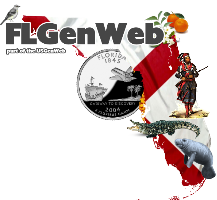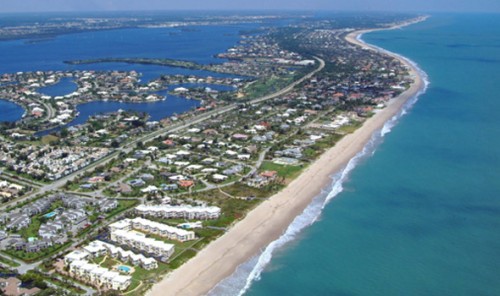The Formative Years (1840-1920) Long before that May afternoon, Vero Beach and the surrounding areas which would eventually become Indian River County, were already thriving and forging their own destiny. The flow of settlers began about the mid 1840s according to the territorial census, and by the end of the century, new communities such as Sebastian, Wabasso, Gifford and Roseland had already been established. The greatest impetus to growth during these years can be traced to two events. The first was the creation of Henry Flagler’s Florida’s East Coast Railroad (FEC) which began service through Indian River County in 1893. It provided fishermen and growers of citrus and vegetable products with the fastest shipping possible to the northern markets. The FEC also accelerated land development. Companies purchased large tracts from the railroad (which had acquired the land from the state as part of the deal to build the railroad) and laid out entire cities - Fellsmere being the most familiar to county residents. A spur of the railroad was built linking Fellsmere to the main track in Sebastian. The next development which impacted growth was the creation of Drainage Districts in 1905 which were part of the state sponsored Land Reclamation Program. The Drainage Districts, as their name stated, would drain millions of acres of wetlands turning these uninhabitable areas into highly productive real estate. Two of the largest privately funded companies were in Indian River County – The Fellsmere Farm Company founded in 1910, and the Indian River Farms Company founded in 1912. As time would later prove, the creation of the Indian River Farm system under Herman Zeuch’s direction was destined for success as the design was better able to deal with Florida’s unpredictable weather, particularly rains, than the Fellsmere project of E. Nelson Fells. In July of 1915, an unusually heavy rain fell -- 13 inches in 24 hours. The storm flooded Fellsmere’s drainage ditches and nearly put the company and the town out of business. The heavy rain had little effect, however, upon Vero Beach’s drainage system. Forefront among the industries born in that time was Indian River citrus which rapidly became the benchmark by which all other citrus products were judged. Alf B. Michael established Orchid Island Growers which set the standards for citrus production making Indian River County citrus the leader in the industry. While the citrus industry was hitting new heights, other industries were forming. In 1916, Jacksonville banking barons Bion H. Barnett and William D. Barnett, in association with former Florida Governor Francis P. Fleming, organized the Sebastian Ranch Company which would handle produce, dairy and cattle. Another enterprise, the Sebastian Land Company initiated timber and naval stores operations near Sebastian in 1919. The extraction of turpentine from pine forests near Wabasso and Sebastian contributed to Florida’s naval stores industry. On the urbanization end, Vero began to grow. The town was laid out in 1914, and during the next 15 years, nearly four hundred miles of canals would be surveyed and dredged, and roads would be built. In 1917, the first movie theater, the Strand, was opened. The first power plant was built in 1918 by privately owned Vero Utilities Company. Unable to keep up with the need for electricity, Vero Utilities sold the plant to the City of Vero in early 1920. During that time, when electricity was a new commodity, it was common practice to run it only at night, and only on Wednesdays during the day for the convenience of women who had electric irons. It was also common when electricity failed, for the movie theater patrons to go over to the plant and help the engineers start the engines. In 1919, Vero’s first bridge was built connecting the mainland to the barrier island. The first newspaper, the Vero Press, was organized in March 1919 by Tom Campbell and Paul Nisle. The population growth and the emergence of urbanization encouraged Vero and other communities in the area to incorporate. Vero was chartered as a town in 1919, and while many slogans were suggested to attract tourists and permanent residents, the one that has remained since then is "Vero, Where The Tropics Begin." How Vero got its name can be found on the Library's geneology website and the Reference Room (Vero Beach City History). As the era ended, the railroad offered a faster mode of travel and broadened the markets for citrus and produce. It also opened up venues for passenger travel. The drainage district program created better agricultural lands and industries. Cities grew and the face of Vero Beach and Indian River County changed forever. Source: VeroBeach.com |
|
|


